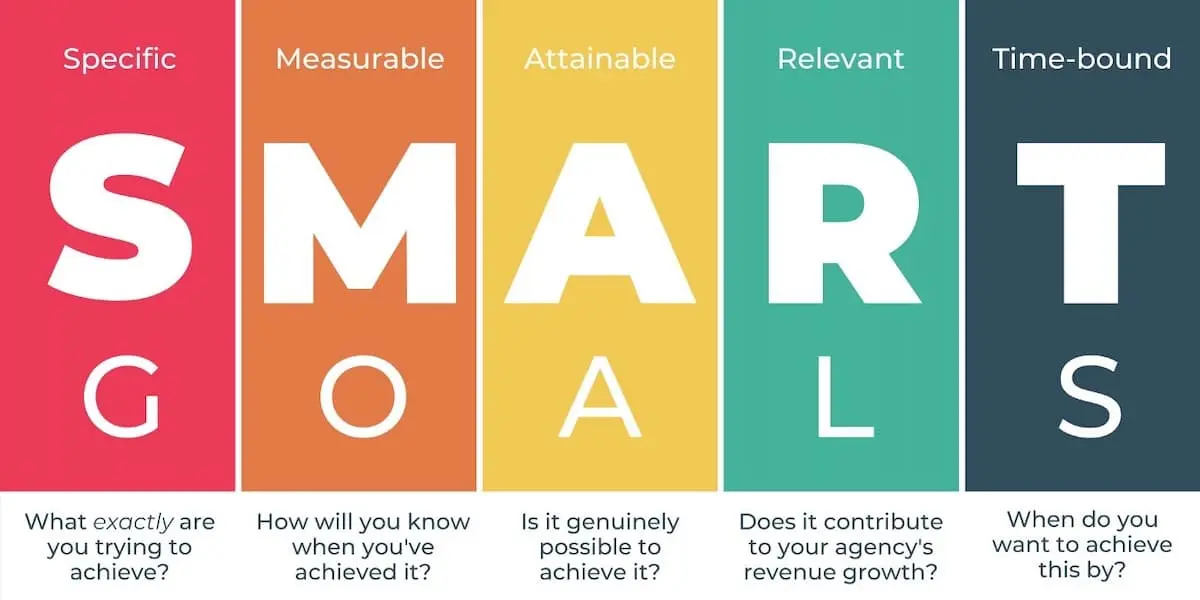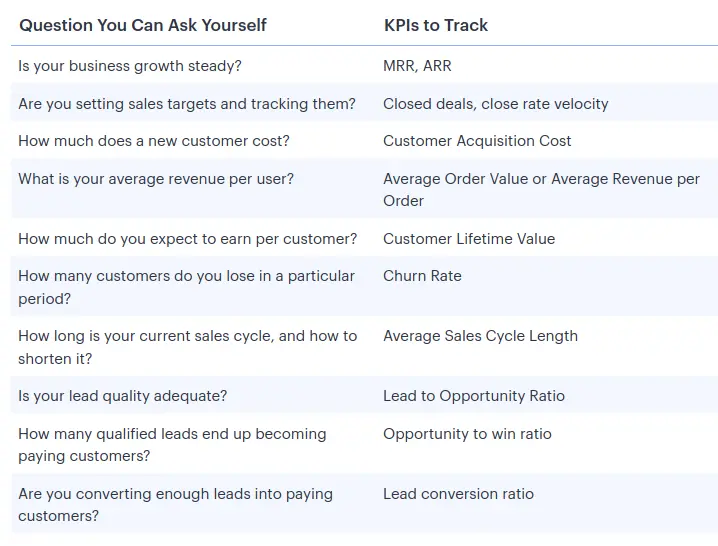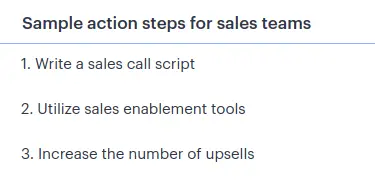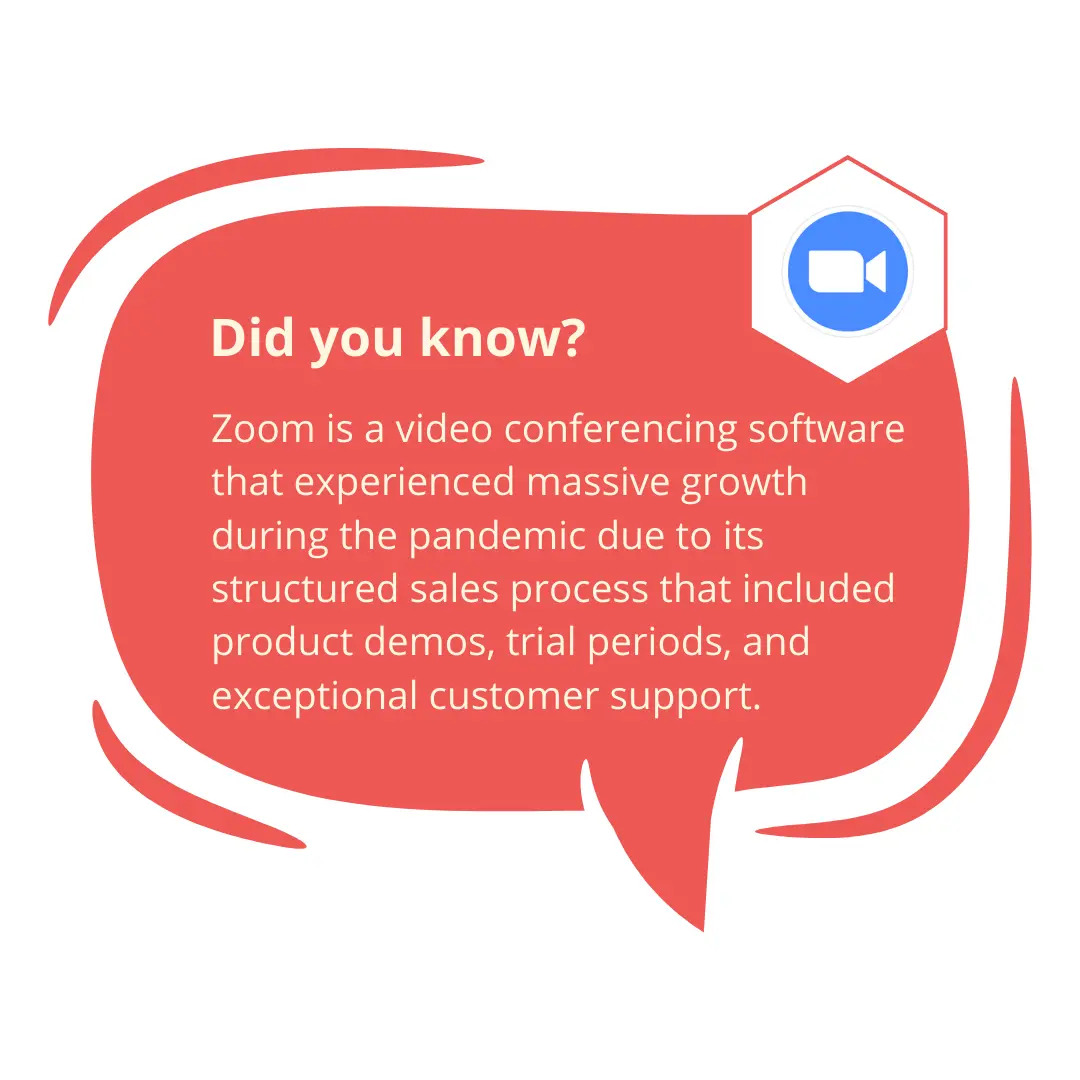What do you do when someone asks about your business sales plan? Do you question how to do business as you’ve never thought of writing a sales plan for your business?
According to HireDNA, 90% of businesses with guided sales processes are top performers. That sounds great, right? But how do you develop a successful sales plan?
Don’t worry. Here’s a guide to developing a sales plan to help you achieve your sales targets. So, grab a cup of coffee, be ready with a scribble pad, and let's start.
What is a Sales Plan?
Before we get into the nitty-gritty, let’s start with the basics. What exactly is a sales plan?
Simply put, a sales plan is a strategic document that outlines your business's sales goals, target market, and methods for achieving those goals. Think of it as the backbone of your sales tactics.
It gives you and your sales team clear direction on what needs to be done, how you will do it, and the metrics to track your progress.
Here’s why it’s important: without an action plan, you’re essentially setting your sales rep up for confusion. You may have goals, but it becomes hard to reach them without a business plan or framework.
A solid sales plan ties everything together: it tells you who you’re targeting, how you’re reaching them, what your unique value is, and how you’ll measure success.
It’s not just about hitting numbers, it’s about creating a sustainable, repeatable process that leads to growth.
Philosopher Plato once said, "who fails to plan, plan to fail".

If you're looking for a strategic sales plan example, check out some free templates or consult a sales leader to create a plan that fits your unique business needs.
The Building Blocks of a Winning Sales Plan
Now that we know what a sales plan is, let’s discuss the key elements that make an effective sales plan. There’s no one-size-fits-all approach, but you'll have a solid foundation if you include these core components.
1. Executive Summary
This is your overview.
Think of it as the ‘at a glance’ section for anyone who might read your plan.
It should summarize the key points of your sales and marketing tactics, including your goals, target market, and the high-level strategies you’ll use to achieve them. This section helps anyone reading it quickly understand the core of your plan.
It’s short, sweet, and to the point, but don’t skip it.
2. Sales Goals and Targets
Here’s where we get specific. Your sales target should be SMART, Specific, Measurable, Achievable, Relevant, and Time-bound.
It’s not enough to say, “We want to increase sales.” How much? By when? Who’s responsible for making it happen? Whether you want to increase revenue by 15% in the next quarter or add 50 new clients this year?
Clear, measurable goals ensure everyone knows exactly what they're working toward, eliminating confusion and aligning efforts.
These goals provide a benchmark for tracking progress and holding team members accountable, making it easier to spot areas for improvement and celebrate successes.
3. Target Market and Buyer Personas
This is crucial: who are you selling to?
You need to know exactly who your customers are. This means going beyond demographics like age or location and digging deeper into your target market's behavior, needs, pain points, and motivations.
Creating buyer personas (detailed representations of your ideal customers) helps here. The more you understand your audience, the better you can tailor your sales approach to meet their needs.
After all, if you don’t know who you’re selling to, how can you expect to close deals?
4. Unique Value Proposition and Positioning
What makes your product or service stand out?
Why should customers choose you over the competition? Your value proposition is the promise you make to your customers of the benefits they’ll gain by doing business with you.
This section should clearly define how your product solves its problems or fulfills a need in a way that your competitors can’t. This is key because, without clear differentiation, you’re just another option in a crowded marketplace.
5. Sales Strategy and Tactics
This is where the rubber meets the road.
Your sales and marketing strategy outlines the methods and techniques you’ll use to achieve your goals.
Will you focus on inbound marketing, cold calling, email outreach, or account-based selling? Maybe a mix of all of these?
The point is to choose strategies that align with your goals and target market. For example, if your audience spends most of their time online, digital and social selling might be key tactics to consider.

6. Sales Tools and Resources
What tools do your sales reps need to succeed?
The right tools, from customer relationship management (CRM) systems to email marketing software, can make or break your process.
If your team is drowning in manual tasks, automation tools could save them hours every week. List the tools you’ll use for tracking, communication, and customer engagement here. A good CRM can help you organize leads, monitor progress, and optimize your process.
7. Sales Team Structure
Who does what?
This section is all about clarifying roles and responsibilities.
If your team members aren’t clear on who’s in charge of what, things can fall apart fast. Lay out the structure of your sales team and ensure everyone knows their specific roles.
Whether you have SDRs (Sales Development Reps), account managers, or field sales reps, ensure roles are defined to avoid overlaps and gaps.
8. Budget and Resources
Your sales plan isn’t just about strategy but also execution. And for that, you need resources.
This section details the budget you’ll allocate for different aspects of your sales tactics.
For instance, how much will you invest in lead generation? What’s your marketing budget to support your sales efforts? A clear budget helps prevent overspending and keeps your strategy grounded in reality.
9. Performance Metrics and KPIs
How do you know if your sales plan is working?
Measure performance. Set key performance indicators (KPIs) to help you track progress. These could be metrics like conversion rates, average deal size, monthly sales growth, or customer acquisition costs.
By monitoring these numbers, you can assess whether your strategies are working or if adjustments are needed.
Steps to Create a Sales Plan
1. Define Goals
Before hitting a bullseye, you need to know where the target is. The same goes for sales planning. The first step is to define your goals.
As mentioned earlier, your goals should be Specific, Measurable, Actionable, Relevant, and Time-bound (SMART). Don't just set "Boost sales." Instead, set a target like "Boost sales by 30% by the end of the next quarter". It gives you a clear target to work towards easier success.

(Source: https://www.breeze.pm/blog/how-to-write-effective-smart-goals)
Make sure your goals are realistic. Setting goals that are impossible to achieve can be demotivating. When setting your goals, you must analyze your team's capabilities, market conditions, and budget.
Keep your goal in mind throughout the process, and make sure each component of your plan is aligned with your goal.
2. Define Metrics
Metrics are the key performance indicators (KPIs) that you will use to track the success of your strategies and tactics. They're essential for measuring success and making data-driven decisions.
Identify the metrics that matter most to your business. It may include total sales, conversion rates, customer acquisition cost (CAC), Lifetime customer value (LTV), and sales cycle length. Ask relevant questions and define a corresponding KPI to each answer you seek. Here are a few examples:

(Source: Encharge)
After defining metrics, set specific targets for each one. For example, if your goal is to boost sales by the end of the next quarter, you should target generating 3 Lakhs in new sales per month.
Make sure your metrics are realistic and aligned with your overall business goals. They should also be easy to track and measure using CRM and call monitoring software. Remember, what gets measured gets managed! Stay tuned for the next step in creating a killer business sales plan.
3. Assess Current Situation
It is essential to clearly understand your sales processes' current scenarios. This means looking closely at your existing sales process, identifying areas of improvement and strength, and determining what's working and what's not.
To determine the current status, you must review your sales data from the past year, including revenue, conversion rates, acquisition costs, and the performance of your KPIs.
You should also take a closer look at your sales team and performance. You may find the answers like:
- Are they meeting their target?
- Are there any training needs?
- Do you have the right people in the right roles?
Then, evaluate your competitors and their sales tactics. By assessing your current situation, you can identify opportunities for improvement and develop a reliable sales plan. Please don't skip this step. It's essential for developing a sales plan that works.

4. Forecast Sales Figures
After successfully conducting all the essential steps above, it's time to forecast your sales figures. Forecasting involves estimating how much revenue you expect to generate in the coming months or years based on your sales goals and historical data.
It would help if you also considered various factors, including market trends, economic conditions, and upcoming product launches or marketing campaigns.
Breaking down your revenue targets into smaller, more manageable sections would be best. For example, if you aim to generate 10 Lakhs in sales this year, aim for 2.5 Lakhs in each sales quarter.
Look for seasonal fluctuations, growth rates, and other factors to help you predict future sales. You can track your progress and make data-driven decisions about your sales tactics by forecasting your sales figures.
5. Outline Action Items
Now that you understand your sales goals, metrics, current situation, and sales forecasts, it's time to outline the specific action items to help you achieve your sales targets.
Ex: If your goal is to increase sales by 20% this quarter, you must identify action items such as launching a new marketing campaign, improving your lead generation process, or offering a new product or service.

(Source: Encharge)
Remember to keep your action items realistic and achievable. Only try to do a little at a time. Focus on the most important tasks that will impact your campaign the most. Review and update your action items to ensure you are on track to achieve your targets.
6. Outline Software, Tools & Tactics
This step involves identifying and outlining the software, tools, and tactics you will use to support your sales tactics.
Based on your needs, research and identify the suitable software and tool that will help you overcome the challenges of managing leads, tracking sales activities, and getting all the details of the sales campaign.
Many software and tools are available in the market, including call tracking software, CRM software, sales automation tools, lead tracking, generation tools, and email marketing software.
Additionally, consider the tactics you will use to support your sales strategy.
- Will you focus on outbound marketing efforts such as cold calling and email outreach?
- Or will you focus on inbound marketing, such as content marketing and social media?
Once you have identified the software, tools, and tactics you will use, outline how they will be integrated into your sales strategy.

Free Sales Plan Template Download
Feeling confused after looking at so many steps? Don’t worry, we’ve got a free template you can use to create your first sales plan. Use the link below to download the sales plan template, fill in the blanks, and use it for your business.
What to Do After You Develop a Sales Plan?
Congrats! You've worked hard and created a successful sales plan, But what comes next? It's time to implement your project and realize those sales goals. Here are some tips to follow:
1. Communicate the Plan
Communication is key to executing a sales plan successfully. Schedule a meeting with your team and present the project to them, ensuring everyone understands their role in achieving the sales goals. Make it fun! Host a sales plan reveal party, complete with confetti and party hats. Who says work can't be a party?
2. Set Up a Sales Dashboard
Set up a sales dashboard to monitor your metrics in real time. This will allow you to see how well your team performs and make adjustments as needed. There are a plethora of sales dashboards available, so find one that works for you and your team. And hey, remember to make it a friendly competition. Have some fun with it.
3. Review and Adjust as Needed
Schedule regular check-ins with your team to discuss progress and make any necessary changes to the plan. If a certain tactic isn't working as well as you had hoped, or you may need to shift your focus to a different target audience, be flexible and willing to make changes to keep your plan on track.
Don't just make it all about work. Celebrate your successes, whether hitting a major sales milestone or having a team member achieve a personal goal. To gain more details, review one of the examples of successful sales plans.

4. Provide Ongoing Training
Your sales team is the driving force behind your plan.
Offer ongoing training and development opportunities to ensure your team is equipped to execute. This could include anything from sales techniques to new tools or mindset training. The better prepared your team is, the better results you’ll see.
Sales training equips your team with the skills and knowledge to effectively engage customers, overcome objections, and close deals, ultimately driving revenue growth and enhancing overall performance.
Conclusion
A sales plan is essential for any business to achieve its goals and increase revenue. By understanding its components, such as identifying target customers, setting revenue targets, and outlining sales strategies and tactics, businesses can create a clear roadmap to success.
Additionally, following the steps to develop a sales plan, including defining goals and metrics, assessing the current scenarios, forecasting sales figures, and outlining action items, can help businesses stay organized and focused on achieving their objectives. It's important to regularly review and adjust your plan as needed to stay on track and keep up with changing market conditions.
And remember to leverage technology like Callyzer. This tool can help you track and analyze sales calls, measure your sales team's effectiveness, and identify improvement areas. By integrating Callyzer into your sales plan, you can gain valuable insights that will help you optimize your sales process and ultimately achieve your revenue targets.

